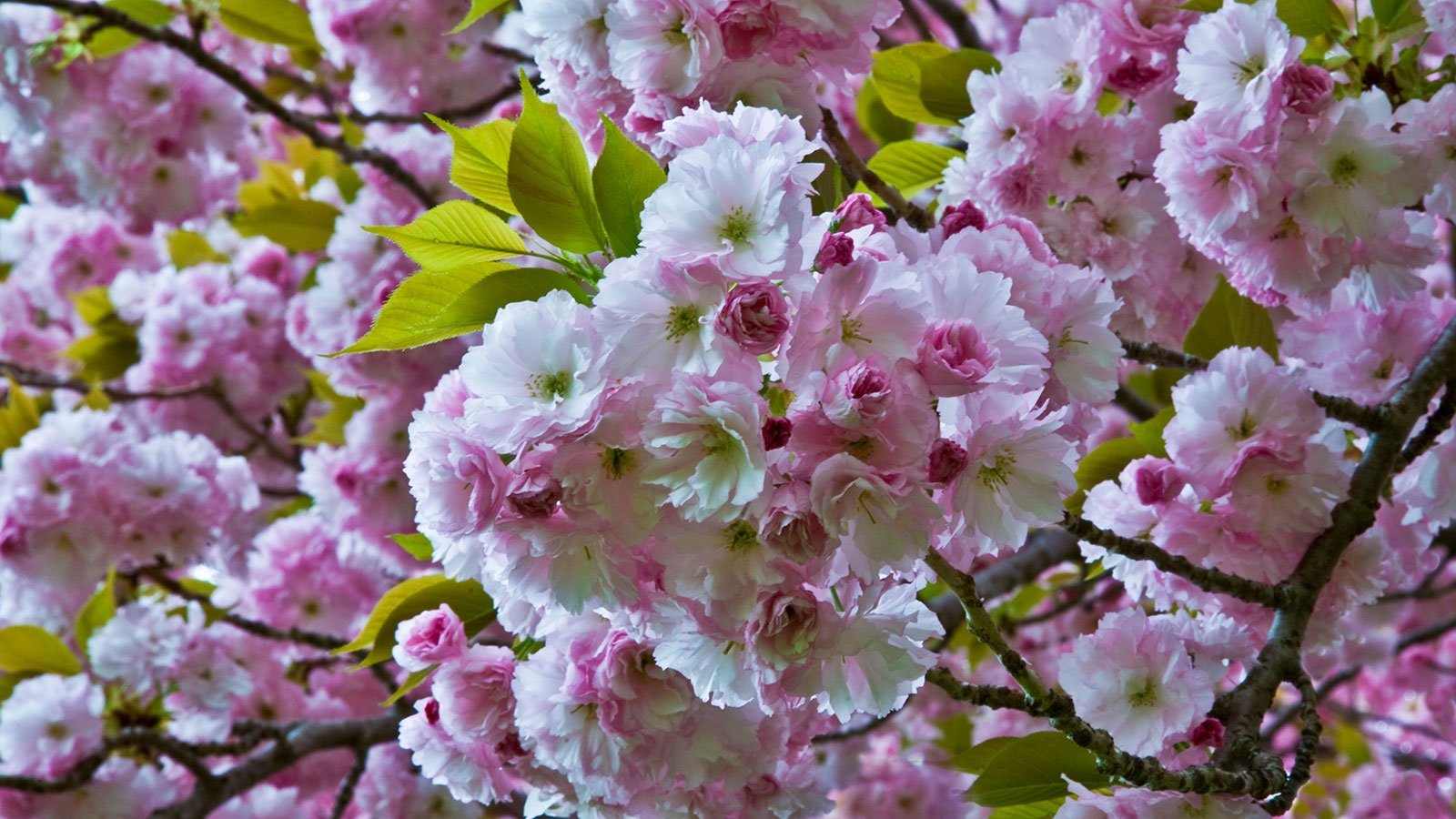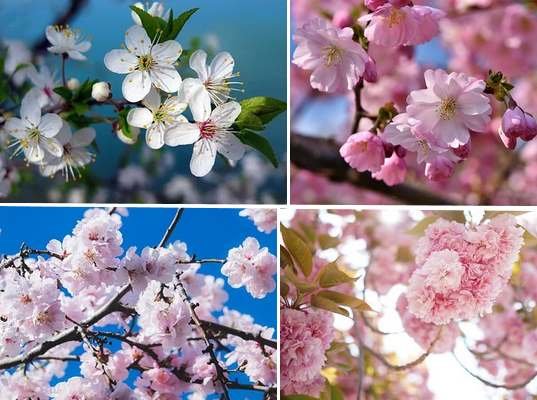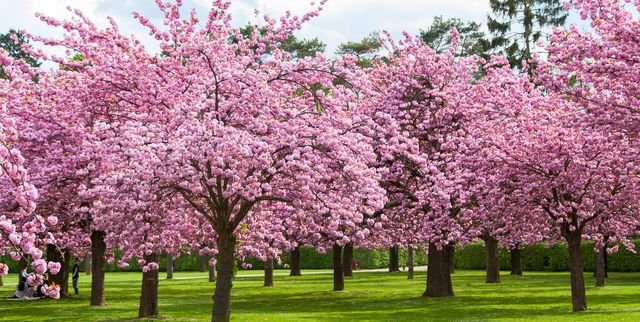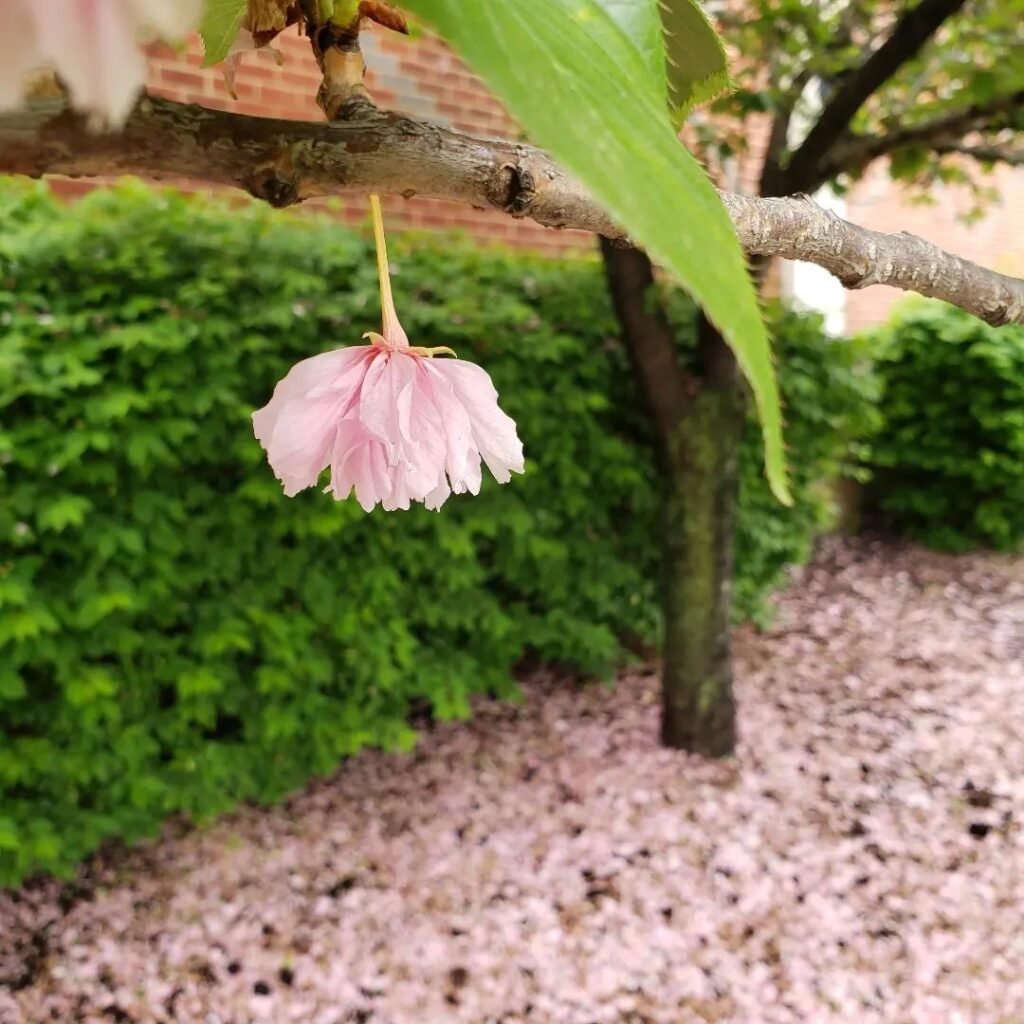Discover the joy of cultivating your own breathtaking Cherry Blossom Tree with this comprehensive guide. From choosing the right variety to proper planting and care we’ll cover everything you need to know to create a stunning springtime display in your backyard.
Here’s the information for the most iconic Cherry Blossom tree, the Japanese Cherry Blossom or Sakura (Prunus serrulata):
| Aspect | Information |
|---|---|
| Botanical Name | Prunus serrulata |
| Plant Type | Deciduous Tree |
| Zones | 5-8 |
| Exposure | Full Sun |
| Bloom Time | Spring |
| Height/Spread | Typically 15-25 feet tall, spreading 15-25 feet wide |
How to Plant and Grow a Flowering Cherry Blossom Tree (Prunus)

Few trees can match the sheer beauty and elegance of a flowering Cherry Blossom Tree in full bloom. With their delicate pink or white petals cascading from the branches, these magnificent trees have captured the hearts of gardeners and nature lovers alike for centuries. However, successfully growing a cherry blossom tree requires careful planning and attention to detail. In this guide, we’ll walk you through every step of the process, from selecting the right variety to ensuring optimal care for your tree’s long-term health and vitality.
Choosing the Right Cherry Blossom Tree Variety
Before you can begin your cherry blossom journey, you’ll need to select the perfect variety for your garden. Here are some popular options to consider:

- Yoshino Cherry (Prunus x yedoensis): One of the most iconic and widely recognized varieties, the Yoshino cherry is known for its abundant, pale pink blossoms that bloom in early spring. It’s a popular choice for residential landscapes and public parks.
- Kwanzan Cherry (Prunus serrulata ‘Kwanzan’): This variety produces striking, double-petaled, deep pink flowers that resemble pom-poms. It blooms slightly later than the Yoshino, extending the cherry blossom season.
- Weeping Cherry (Prunus subhirtella): With its graceful, pendulous branches draped in delicate, pale pink or white blossoms, the weeping cherry is a stunning addition to any garden. It’s often grown as a specimen tree or trained into a cascading form.
- Sargent Cherry (Prunus sargentii): Native to Japan, the Sargent cherry is prized for its deep pink, almost red, blossoms and unique, twisting branches. It’s a smaller variety, making it suitable for compact spaces.
Once you’ve chosen your preferred variety, it’s time to prepare for planting.
Selecting the Perfect Planting Site

Cherry blossom trees thrive in full sun, so choose a location that receives at least six hours of direct sunlight per day. The site should also have well-draining soil, as these trees do not tolerate overly wet or waterlogged conditions.
If your soil is heavy or clay-based, consider amending it with compost or other organic matter to improve drainage. Additionally, avoid areas with heavy foot traffic or nearby structures that could interfere with the tree’s growth.
Proper Planting Techniques

Timing is crucial when planting a cherry blossom tree. The best time to plant is in the early spring or fall, when the tree is dormant and can establish its root system before the growing season begins.
- Dig a Proper Hole: The planting hole should be twice as wide as the root ball but no deeper than the height of the root ball. This encourages the roots to spread outward rather than downward.
- Prepare the Root Ball: Gently loosen the outer roots of the root ball and remove any circling or girdling roots. This will prevent them from strangling the tree as it grows.
- Plant at the Right Depth: Place the tree in the hole, ensuring that the root flare (the point where the roots begin to spread out from the trunk) is level with the surrounding soil. Planting too deeply can lead to rot and other issues.
- Backfill and Water: Backfill the hole with the original soil, gently tamping it down to remove air pockets. Water thoroughly to settle the soil around the roots.
- Mulch and Stake: Apply a 2-3 inch layer of organic mulch around the base of the tree, keeping it a few inches away from the trunk. If necessary, stake the tree to provide support until the roots become established.
Caring for Your Cherry Blossom Tree
Proper care is essential to ensure your cherry blossom tree thrives and blooms to its full potential. Here are some key considerations:
Watering
Cherry blossom trees require consistent moisture, especially during their first year of establishment. Water deeply and regularly, keeping the soil moist but not waterlogged. As the tree matures, you can gradually reduce watering frequency, but be sure to provide supplemental water during periods of drought or extreme heat.
Fertilizing
Apply a balanced, slow-release fertilizer in early spring, following the manufacturer’s instructions. Avoid over-fertilizing, as this can lead to excessive growth and potentially reduce flowering.
Pruning
Cherry blossom trees generally require minimal pruning. However, it’s essential to remove any dead, damaged, or crossing branches to maintain the tree’s overall health and shape. Prune in late winter or early spring before new growth emerges.
Pest and Disease Management
While generally resilient, cherry blossom trees can be susceptible to pests like aphids, scale insects, and borers, as well as diseases like leaf spot, canker, and root rot. Regular monitoring and prompt treatment with appropriate pesticides or fungicides can help prevent and control these issues.
Winter Protection
In colder climates, young cherry blossom trees may require protection from harsh winter conditions. Wrapping the trunk and lower branches with burlap or tree wrap can insulate the tree and prevent frost cracks or sunscald.
Enjoying the Beauty of Cherry Blossoms

One of the greatest joys of growing a cherry blossom tree is witnessing its breathtaking display of flowers each spring. To make the most of this fleeting spectacle, here are a few tips:
- Plan a picnic or outdoor gathering under the canopy of blooms, creating lasting memories with friends and family.
- Capture the beauty through photography, experimenting with different angles and lighting to showcase the delicate petals.
- Consider planting complementary plants, like azaleas or bulbs, that bloom around the same time for a vibrant, coordinated display.
- Celebrate the cherry blossom season by attending local festivals or events that honor these iconic trees.
With patience, care, and a little bit of know-how, you can create your own personal cherry blossom oasis right in your backyard. These stunning trees not only add incredible beauty to your landscape but also serve as living reminders of nature’s remarkable ability to renew itself each year, filling our hearts with wonder and appreciation for the fleeting yet magnificent phenomenon of spring.
Pingback: Explore 17 Amazing Trees Starting with the Letter ‘A’ -
Pingback: How to Grow and Care for Forest Pansy Redbud Trees -
Pingback: How to Grow and Care for Virginia Creeper Gardeners School
Pingback: Cherry Blossom House: Design Ideas and Inspiration
Pingback: Trees That Start with Y: Natural Beauty Explained
Pingback: The Beauty of Hoya Plants: Care and Maintenance Tips
Pingback: Flowering Maple: A Complete Guide to Growing and Care